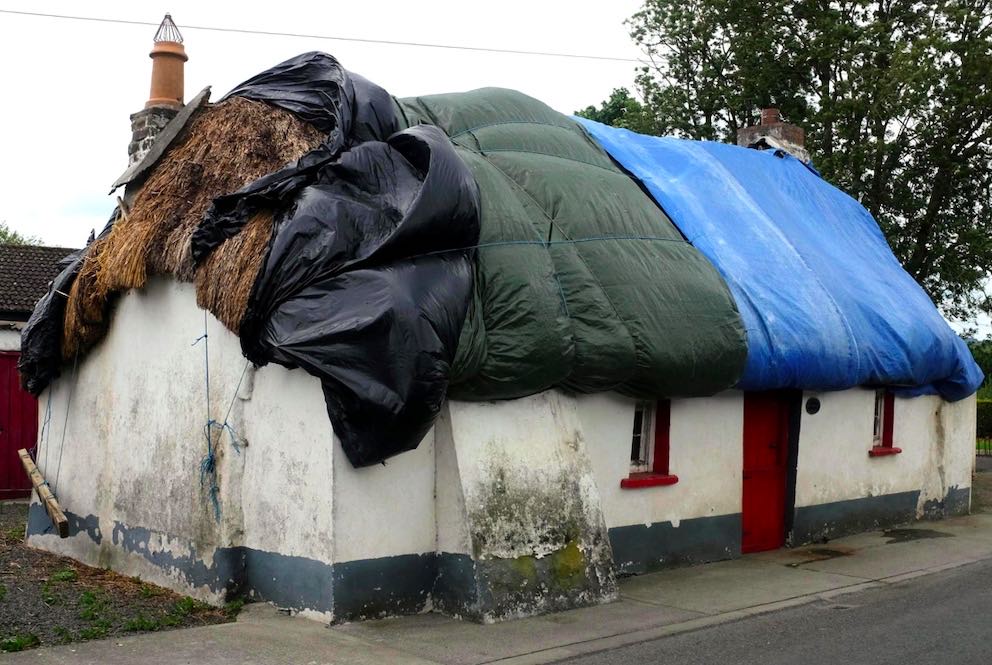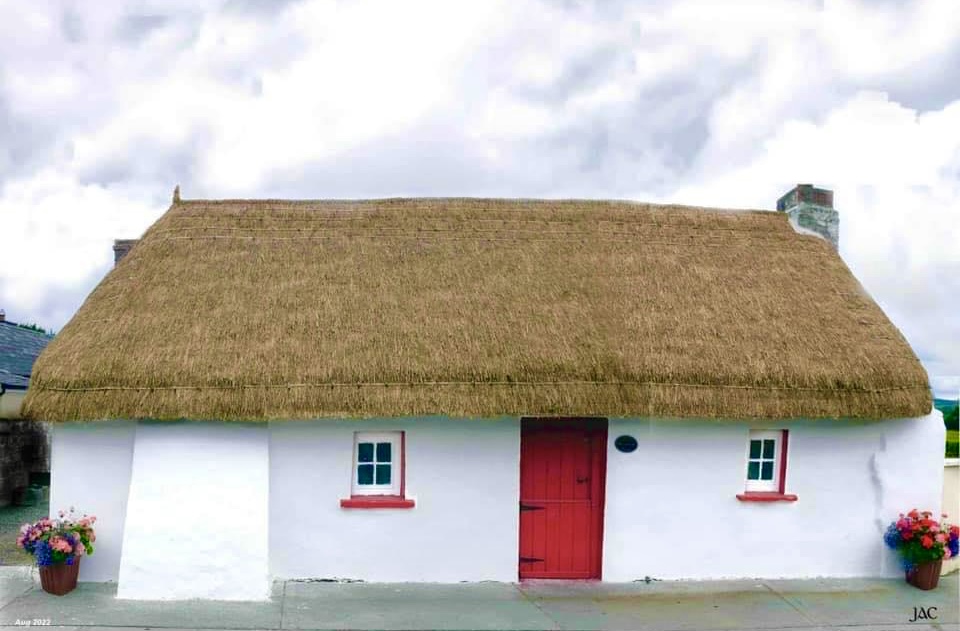
Phe’s House

Welcome to Phil Barron’s House — known personally by the current owner and her family as “Phe’s House” — a coal miner’s thatched cottage situated in the picturesque village of Clogh, just outside of the coal mining town of Castlecomer, Kilkenny, Ireland. Just 19km away is Kilkenny’s historical city which hosts annual tourists from all over the world flocking to see its medieval streets and the famous Kilkenny Castle.
The owner of Phe’s House, Helen Kealy-Dunne, and her family can trace their ancestral connection to the house back nearly 200 years and are proud to still be in possession of this vernacular dwelling today. Phe’s is more than just a property to them, it’s a direct link to their ancestors and Irish heritage.
However, owning a vernacular dwelling in Ireland is expensive and property owners of this kind rely on government funding to keep their buildings standing. In 2005, Helen re-thatched the house, whitewashed the walls, and painted parts of the house, such as its iconic red half-door. But since 2004, due to harsh Irish weather, increasing financial demands, and Helen’s ill health, the house fell into disrepair.
To help restore this piece of Irish history back to its former beauty, Helen and her family launched a GoFundMe page to help cover the costs of renovating the house. Additionally, they applied for a grant from the Built Heritage Investment Scheme 2021 from the Department of Housing and Local Government and Heritage, and the Kilkenny County Council — which they were awarded. However, the grant only covered half the cost to repair the roof so the rest of the restorations were paid using the funds raised by generous and much-appreciated donators. All in all, the house received new beams to secure the roof, new thatched roofing, whitewashed walls inside and outside, and new paintwork, with the help of master thatchers, a conservation consultant, local government representatives, family members, friends, and admirers of the house near and far. The beauty of this house is the family’s commitment to maintaining its originality. This means only using straw thatch for the roof as straw is indicative of the house’s connection to the coal mining industry, as opposed to reeds that are often seen on fisherman’s thatched houses. Whitewashing the walls is another way the house keeps its originality intact instead of simply painting the walls with regular paint.
Although Phil Barron’s House is a protected building under Ireland’s National Inventory of Architectural Heritage (Reg No: 12400203), it remains the owner’s responsibility to upkeep the maintenance of the house.


















